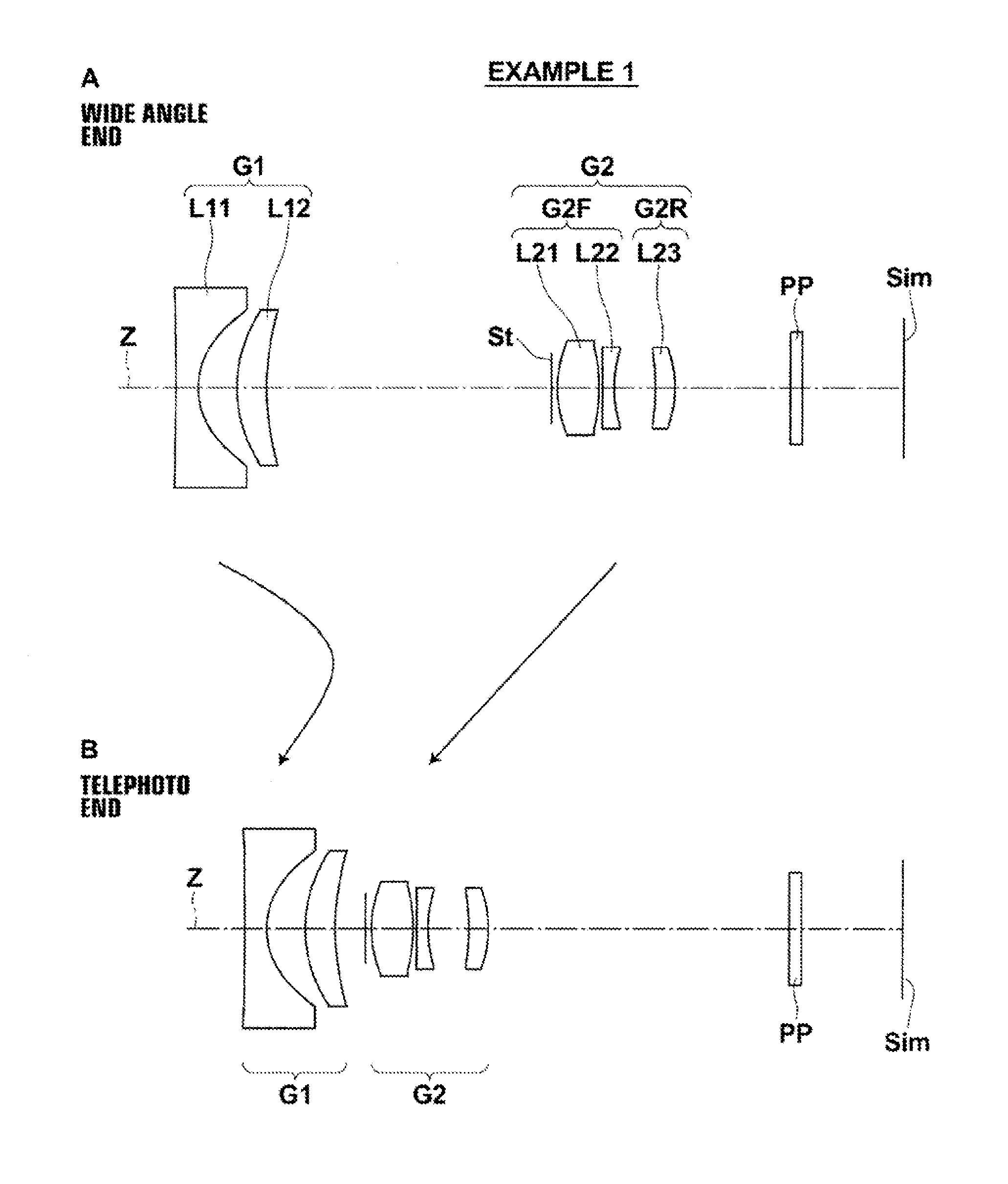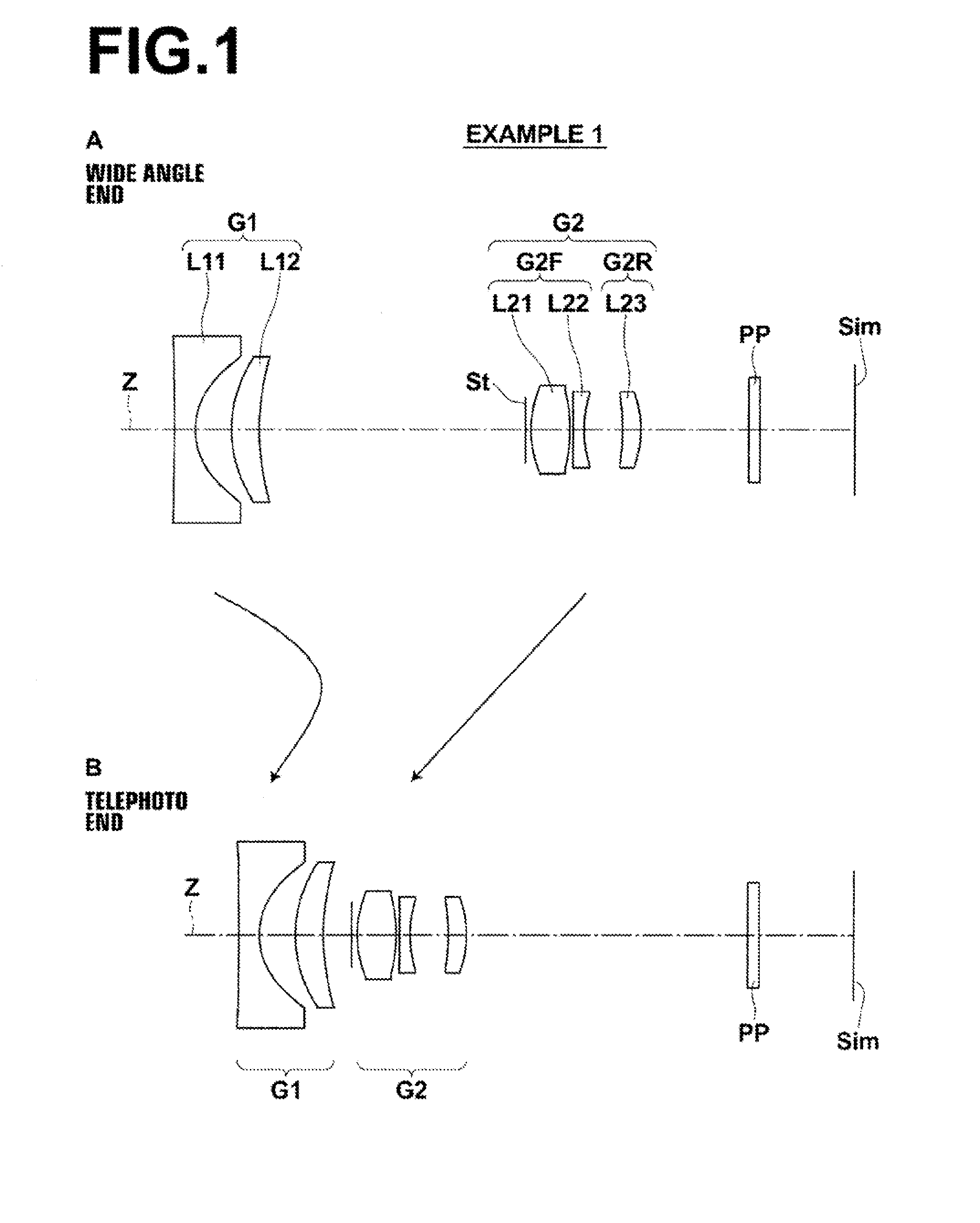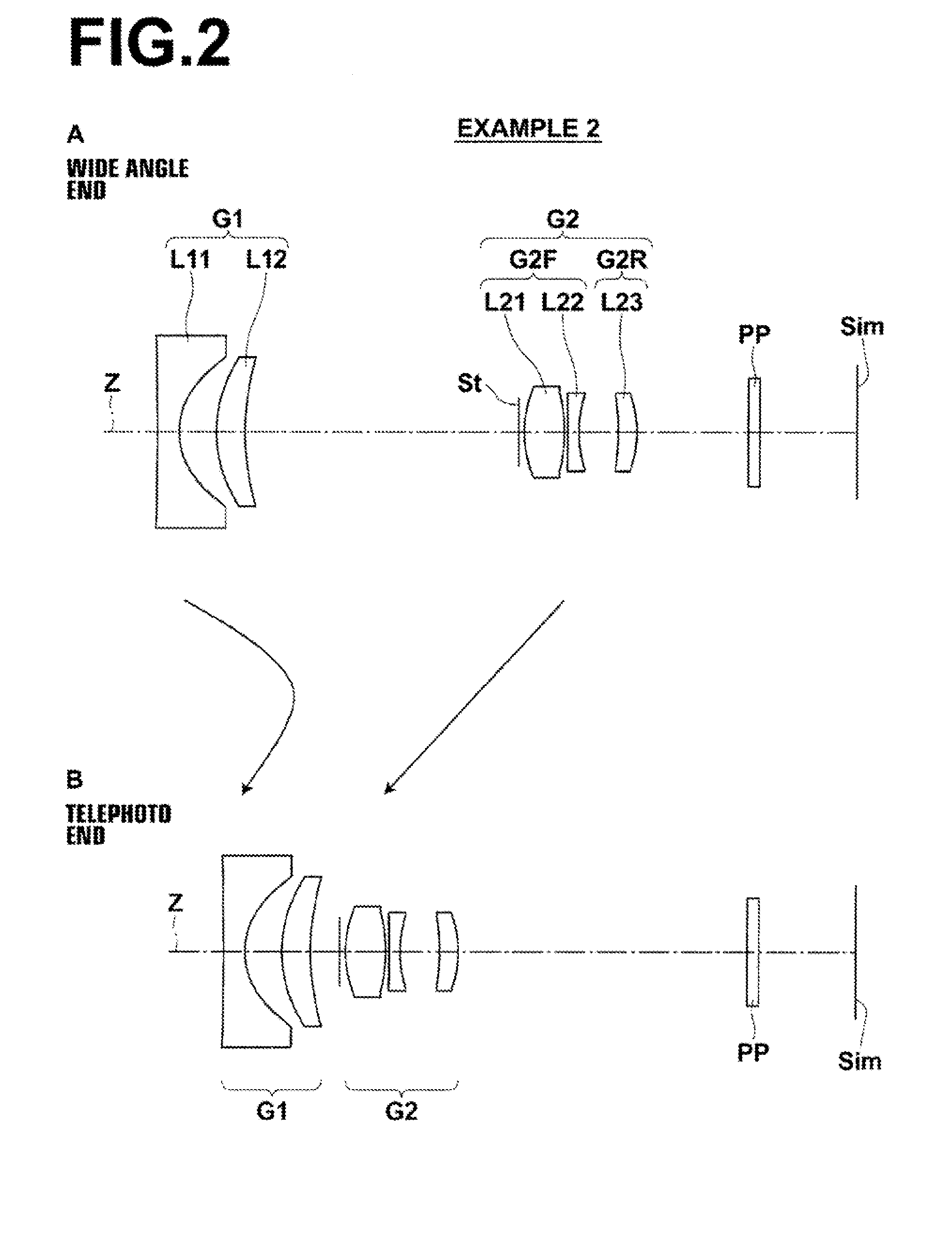Zoom lens and imaging apparatus
a zoom lens and zoom technology, applied in the field of zoom lens and imaging apparatus, can solve the problems of large lens system, inability to correct aberration in a balanced manner, and large second lens group, so as to shorten the close distance imaging distance, avoid interference, and increase the speed of focusing operations
- Summary
- Abstract
- Description
- Claims
- Application Information
AI Technical Summary
Benefits of technology
Problems solved by technology
Method used
Image
Examples
Embodiment Construction
[0065]Hereinafter, embodiments of the present invention will be described in detail with reference to the attached drawings. FIG. 1 is a cross sectional diagram that illustrates the configuration of a zoom lens according to an embodiment of the present invention, and corresponds to a zoom lens of Example 1 to be described later. FIG. 2 through FIG. 6 and FIG. 8 are cross sectional diagrams that illustrate configurations of zoom lenses according to other embodiments of the present invention, and corresponds to zoom lenses of Examples 2 through 6 and 8 to be described later. FIG. 7 is a cross sectional diagram that illustrates the configuration of a zoom lens, which is a reference example with respect to the present invention. The basic configurations of the embodiments illustrated in FIG. 1 through FIG. 8 are the same. The manners in which the configurations are illustrated are also the same. Therefore, the zoom lenses according to the embodiments of the present invention will be des...
PUM
 Login to View More
Login to View More Abstract
Description
Claims
Application Information
 Login to View More
Login to View More - R&D
- Intellectual Property
- Life Sciences
- Materials
- Tech Scout
- Unparalleled Data Quality
- Higher Quality Content
- 60% Fewer Hallucinations
Browse by: Latest US Patents, China's latest patents, Technical Efficacy Thesaurus, Application Domain, Technology Topic, Popular Technical Reports.
© 2025 PatSnap. All rights reserved.Legal|Privacy policy|Modern Slavery Act Transparency Statement|Sitemap|About US| Contact US: help@patsnap.com



